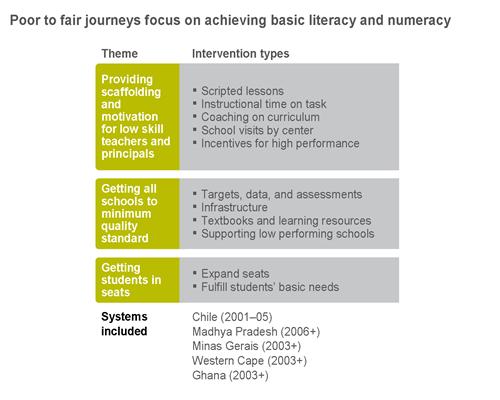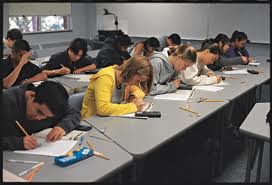CEI Competition!
Share lessons and win prizes!
Deadline Tuesday,
October 25
Enter the
"Heart Centered Education" Competition. The winner will receive a $50 gift certificate.
Runners up will receive $20 gift certificates.
We are looking for lesson plans, stories and ideas regarding Heart- Centered Education and a vision for the Future of Education.
There are 3 options:
1. Address how you believe adding compassion, courage, confidence, and consciousness
to Common Core could transform education.
2. Provide a lesson plan that incorporates compassion, courage, confidence, or consciousness into a history, science, or literature lesson.
3. Tell a story about how you have used one of these traits (compassion, courage, confidence, or consciousness) in a lesson.
Include results, including either quantitative data or student work samples.
Submit the lesson to: info@schoolimprovement.org by Oct. 25.
Make sure to include your name, position, school and school district or organization, and address.
~~~~~~~~~ We hope you are enjoying our New! Website www.edimprovement.org View our blog, and see bios for our team, feeds from relevant sites, announcements of upcoming events, and descriptions of our services. Thanks to Hexpose.com for their design & support! This month-- we are spotlighting CEI team member: Suzan Mullane of Anchorage Alaska. CEI remains committed to providing high-quality research based services, to questioning current strategies, and contemplating the future of education, nationally and globally. ~~~~~~~~~~~ |
|
The CEI is continuing
to Partner with Pensarus, Inc. and others.
For more information on our services and modules or for a FREE 2 HOUR Consultation contact Dr. Mason at
571-213-3192; cmason@edimprovement.org
To help us meet your needs, please send an email with answers to the following questions:
1. Primary concern or need:
2. Proposed dates of service:
3. # of teachers:____
4. What you expect from CEI:
We will respond within 24-36 hours.
Thank you!
|
|
|
Editor: Carolyn Lieberg, M.A.
|
|
Contact Information
Contact our Executive Director, Dr. Christine Mason.
Email: cmason@edimprovement.org
Phone:
(571) 213-3192
To be removed from this email list please send an email with the header
REMOVE to:
info@edimprovement.org
|
|
|
|
Dear Educator,
With the Common Core, the U.S. continues to reach for the top. School improvement, Race to the Top, NCLB, all are extensions of plans to bring the achievement of U.S. students into the top tiers of schools internationally. Now in the middle of all of these initiatives comes a new opportunity -- the opportunity for NCLB waivers.
Schools have been under tremendous pressure for a long time. With the NCLB waiver comes the possibility that schools can take a deep breath, and focus on putting into place additional components to raise scores. Could it be that easing the pressure could help catapult schools and districts ahead?
Perhaps as schools take a breath, they can take the time to study more closely the top school systems -- both internationally and nationally. In this edition of Wow! we look at systems that have soared ahead-- that have improved more quickly than others. We also take a look at Maryland, a state that has managed to be ranked #1 according to several measures for the past 3 years. We invite you to reflect on what Maryland, Singapore and Finland may have in common.
|
|
|
NCLB Can Now Be Waived
by Carolyn Lieberg
First there was the Common Core. Forty-four states, the District of Columbia, and the Virgin Islands have approved the Common Core Standards, thereby voting for deeper rigor in their classrooms.
Now another major change is coming to K-12 schools. At the end of September, state education agencies learned they can apply to back away from the requirements (and penalties) of NCLB, which are currently set for deadline in 2014; that was the year when schools were to have reached 100% proficiency in students' math and language skills.

Education Secretary Arne Duncan (above) estimates that more than 80% would fail to meet the standards as they are now written, so steps had to be taken.
States can request a waiver from the NCLB requirements by creating a detailed plan for, among other things, educational goals, accountability systems, and evaluations of teachers and administrators. In order to apply for a waiver, states must notify the Department of Education by Oct. 12; the first application must be submitted by Nov. 12. A second round will begin in February.
Many states are enthusiastic about the waivers and the alternative plans. However, several states may choose not to apply. For example, Texas, which declined Race to the Top Funds because of the requirements involved in receiving grants, is unlikely to apply for the waiver.
Among the groups who are enthusiastic about the waiver is the 170,000-member ASCD (Association for Supervision and Curriculum Development), which supports the flexibility in the waiver requirements. The new accountability program rewards success and encourages progress in a rigorous, standard-centered education, rather than punishing failing schools.
Education Secretary Duncan has said that the only waivers that will be accepted are those that adopt higher standards than NCLB and show improved teacher evaluation systems. Indiana Department of Education spokesperson Alex Damron said, "We believe Indiana's growth model is the best student growth measure in the nation, and we believe we can develop an accountability system that uses clear labels, incorporates student growth, and still maintains rigorous standards."
The U.S. Department of Education web page about the waiver request is here:
http://www.ed.gov/esea/flexibility | |
|
|
World Class Improvements
by Christine Mason
| |
In a recent report by the McKinsey Foundation, Mourshed, Chijoke, and Barber (2010) describe how various countries obtained some of the greatest improvements in student achievement. The report focused on 20 educational systems,

including 14 countries, five regions or cities, and one charter school education system. Some of the key findings were:
- The type of intervention that worked best varied with the level of achievement. For the lowest performing systems (Madhya Pradesh, India and Minas Gerais, Brazil), the use of scripted materials and scaffolding for teachers was instrumental to the gains that were made. For mid-level schools, relying on high quality performance data, teacher and school accountability, and school financing were critical. For the highest performing schools (Singapore and Finland), the focus was on teaching as a profession, peer-based learning, and supporting innovations.
- Schools and systems also reported that improvements came with increased instructional time, providing other supports such as free meals and healthcare to the poorest students, funding action research, and the use of specialized curriculum coaches.
- To improve achievement, the systems implemented by schools and districts moved "from prescribed forms of teaching, curriculum, and assessment toward an approach predicated on enabling all students to reach their potential" including "fostering independent and lifelong learning among students" (in Australia, Canada, and Finland) (Schleicher & Stewart, 2008).
References:
Moursched, M. , Chijoike, C., Barber, M. (2010). How the world's most improved school systems keep getting better. London: McKinsey & Co.
Schleicher, A. & Stewart, V. (2008). Learning from world-class schools. Educational Leadership, 66(2), 44-51.
|
 |
Maryland's Award-Winning Schools -- Again!
| |
The Maryland school system has numerous reasons to celebrate. The state's high schools have earned "number one" in three national rankings. The first came from Education Week, the nation's leading education newspaper, which uses a measure they call Quality Counts in determining top schools. Factors include teacher effectiveness, accountability and standards, work on school readiness and high school reform, and preparation for college and the workplace. Dr. Nancy S. Grasmick, recently retired State Superintendent of Schools in Maryland, said, "Education is a bipartisan cause in our State, and we've had unflinching support from the Governor, the Maryland General Assembly, educators, parents, and the public at large."

The second vote of praise came from the College Board, which reports on the rigorous AP program. Maryland students finished their AP exams higher, overall, for the third year in a row; 26.4 percent of the students tested 3 or higher on their exams. A 3 is considered "college mastery."

College Board President Gaston Caperton (above) said, "Maryland students are rising to the challenge set by educators across the state, and, as a result, more students graduate high school armed with the tools to succeed in college and beyond."
Finally, in the Washington Post's Challenge Index, a measure that was formerly published in Newsweek, Maryland has the highest percentage of schools placing in the top seven percent of high schools in the nation. In other words, of the total of 1,904 schools that reach the seven percent layer, 184 of the schools are in Maryland. The high schools are spread among 17 counties. "Maryland takes seriously our responsibility to students, and has been working with our school systems to prepare our graduates for college and the workforce," said Grasmick.
Blue Ribbon Schools
Every year, the state of Maryland designates six schools-two elementary, two middle, and two high schools-as "Blue Ribbon" schools. Elementary schools in Allegany County and Baltimore City, Bel Air and Mt. Washington respectively, are this year's winners in the first category. The schools share some common characteristics, including having more than 40 percent of the students on free or reduced lunch programs. The schools also have heavy parent involvement, and each school partners with a university.  In the Blue Ribbon middle schools, Lime Kiln in Howard County and Oklahoma Road in Carroll County, over 90 percent of students are "proficient and above" in math and reading. Students from the schools are active in environmental programs and community charities. Both schools have very strong staff, several of whom have been award-winners or are National Board Certified. Severna Park High School in Anne Arundel County and Towson High School Public Law and Policy in Baltimore County round out the Blue Ribbon schools this year. Severna is dedicated to the arts and for 21 years has produced an all-student "Rock 'N' Roll Revival." Both schools had generous numbers of students Commended for National Merit Awards, and together the schools had four National Merit finalists. |
|
|
Are you focusing on independent and lifelong learning? Are your teachers supporting each other? Are you working to improve teaching as a profession? Where does your school stand when it comes to innovations?
As your school/district is concentating on student achievement, are you also able to develop teacher skills; is your professional development aimed at furthering excellence and innovations?
Consider the current status of your school. Do you see a clear path to improvement?
Sincerely,
|
|
|